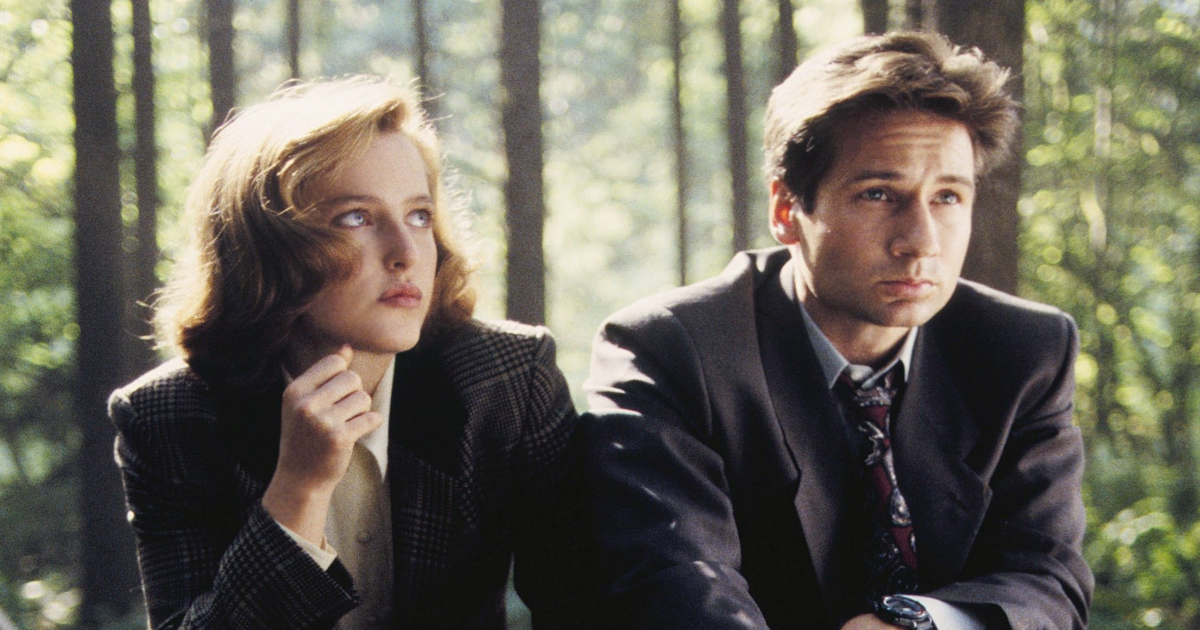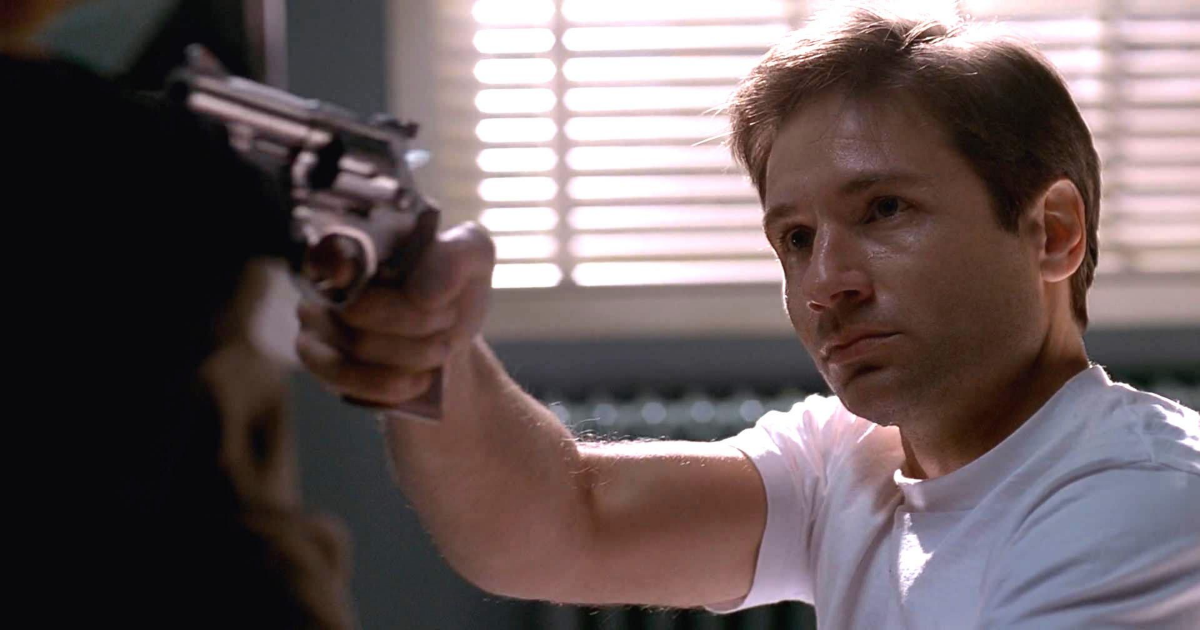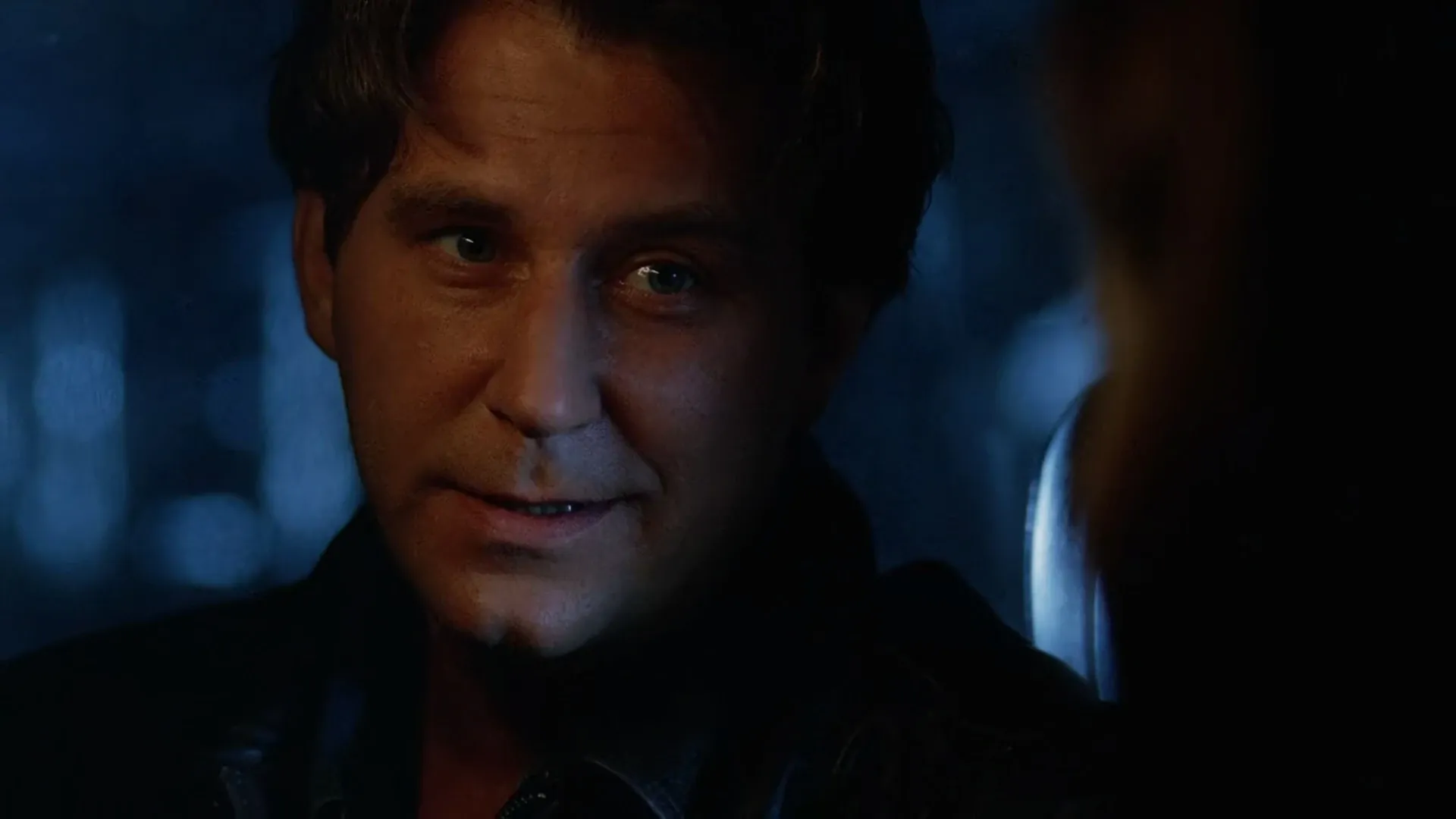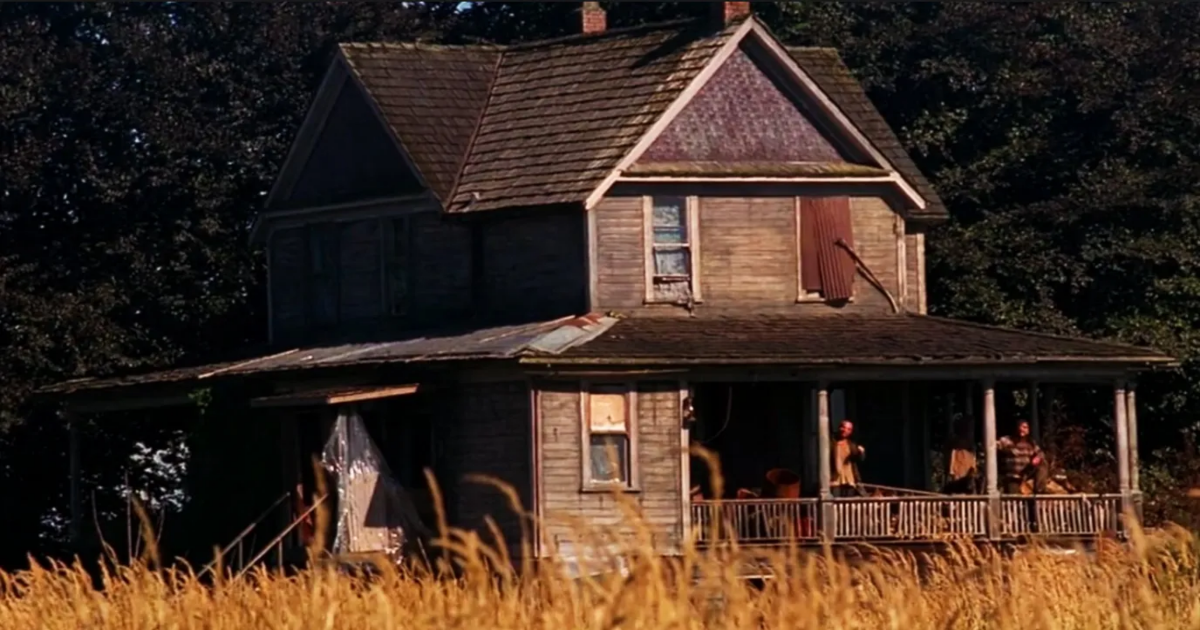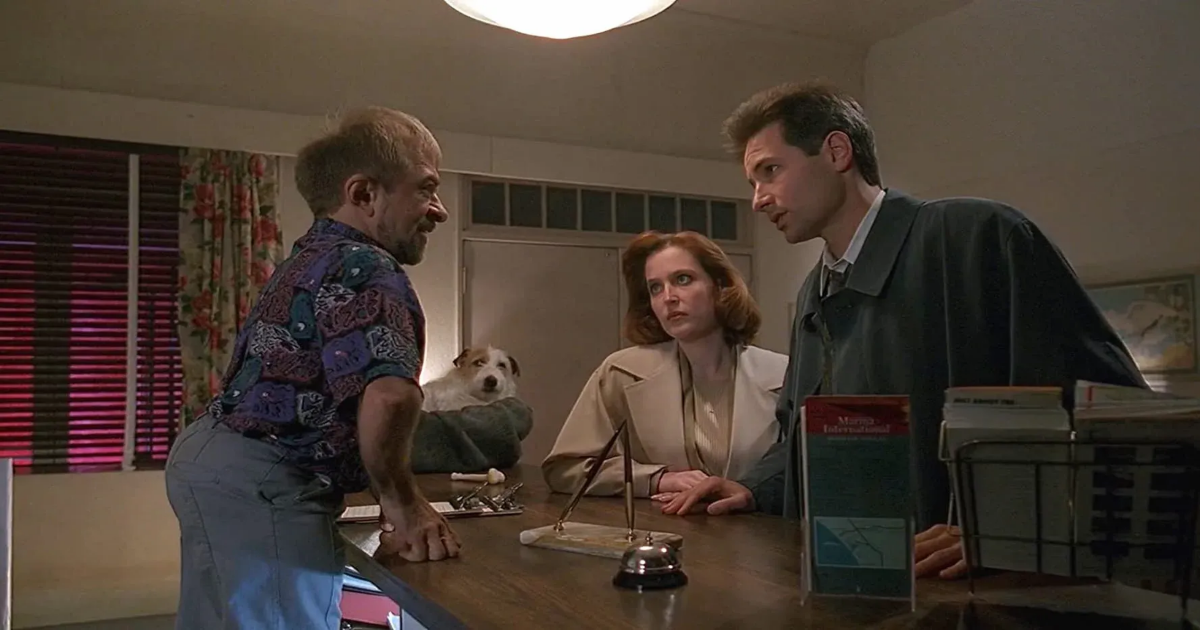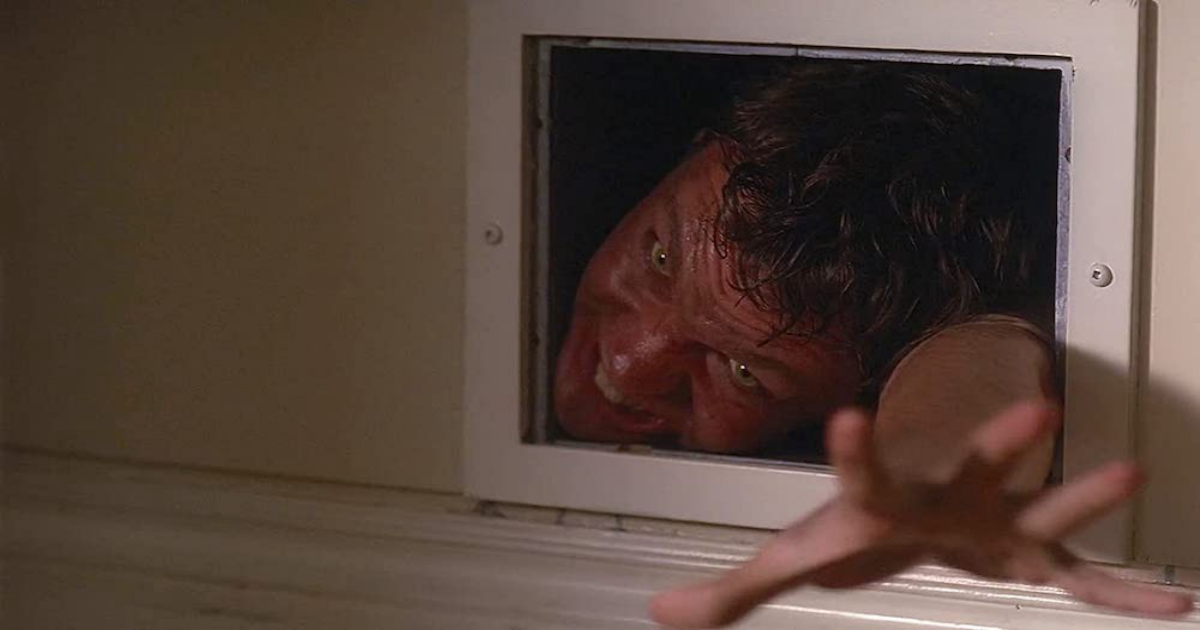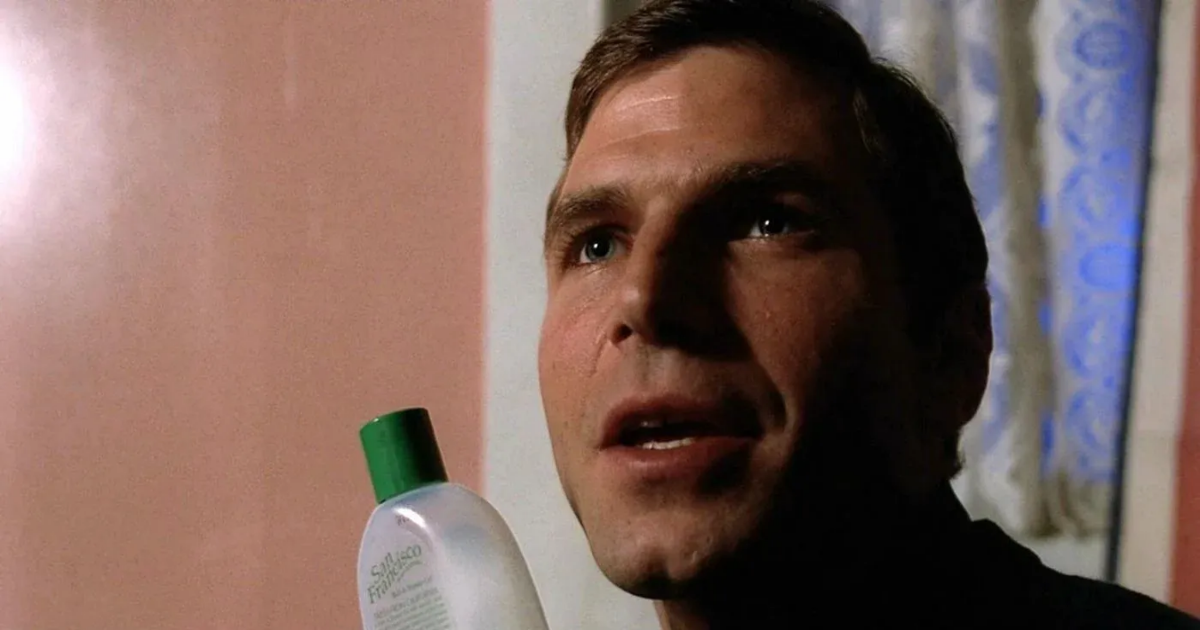Few films or television programs has had quite the same influence or approach to genre as the long-running Fox hit The X-Files. Best known for featuring the sleuthing talents of Special Agents Fox Mulder and Dana Scully (the understated David Duchovny and the magnetic Gillian Anderson), the show was a masterpiece mash-up of seemingly incongruous elements: anthology and serialization, profound spirituality and stultifying mundanity, bald-faced comedy and ponderous pretension, gigantic set pieces and character moments about as intimate and subtextual as anything seen in the history of American cinema. In short, The X-Files was all over the place.
Unlike many of today’s showrunners, X-Files helmer Chris Carter encouraged every one of his writers and directors (including horror fiction’s Stephen King, cyberpunk’s William Gibson, and Duchovny and Anderson themselves) to come to the table with their own versions of what the show was supposed to be, informed by their individual interests and preoccupations. This allowed several great writers and directors to flex their creative vision.
Alex Gansa and Howard Gordon, who would later go on to make shows like 24 and Homeland, were preoccupied with conspiracy and bureaucracy; Glen Morgan and James Wong, most famous for the Final Destination franchise, were obsessed with the films of John Carpenter and Wes Craven; Vince Gilligan, of Breaking Bad and Better Call Saul, brought his unique blend of disturbed psychology and perverse comedy to create some of the show’s most memorable and outrageous stand-alone entries; and the most highly regarded of them all, Darin Morgan (brother of the aforementioned Glen), sought to deconstruct the show, criticize its lead characters, and deeply unsettle the fan base.
(Incidentally, the substantial book Monsters of the Week, penned by critics Zack Handlen and Emily St. James, formerly VanDerWerff, contains an episode-by-episode analysis and is a brilliant resource for any fan.)
This piece celebrates what were arguably some of The X-Files’ strongest entries: the ambitiously creative monster-of-the-week episodes, specifically those that were unique in their weirdness and sometimes even pushed the limits of good taste and network standards. These are the most wonderfully messed-up episodes of The X-Files.
6 Pusher (Season 3, Episode 17)
Possibly the least 'gross' episode on this list, Vince Gilligan’s gem "Pusher" is still no less depraved than any of the rest. It centers on Robert Wisden’s disturbing portrayal of Robert Patrick Modell, a focused and calculated killer with a special talent for talking anyone into a state of hypnosis where he can then control their every move.
What makes Modell such a great villain (one of The X-Files’ best, as a matter of fact) is not his power but the way he uses it. He is effectively a manipulator of people (we all have met at least one) but his antisocial tendencies extend into the superhuman realm. He is not just dangerous and deadly, but also seductive, and what makes him so terrifying is that he completely takes away your agency and lulls you into an upside-down sense of right and wrong.
Modell pre-figures Breaking Bad’s Walter White (one of Gilligan’s later creations) in that his delusions of grandeur are attempting to compensate for his utter human smallness and insecure masculinity. He is completely pathetic, but as we learned from Walter White, pathetic people often wreak the most havoc. “Pusher” is an X-Files classic, and fans of Breaking Bad will find a through-line: an equally intense action-thriller experience, with murky gray ethics to boot.
5 2Shy (Season 3, Episode 6)
“2Shy,” like “Pusher,” is yet another third-season highlight, although this chapter is bafflingly less beloved. Who knows why? This is, after all, a brilliantly intense, gross, and upsetting body-horror tale about a seemingly innocuous bachelor who stalks the internet for overweight women, romances them, and then kills them by sucking out their body fat – be still, my beating heart.
The premise is just so darned outlandish and the script sometimes verges into unintentional silliness, but God help us if the terror doesn’t feel real and immediate and visceral. Timothy Carhart’s performance as the mutant Virgil Incanto is, like many of The X-Files’ best, decidedly idiosyncratic and so specific that you cannot help but be gripped and fascinated constantly. Incanto’s entire scheme is deeply, deeply troubling – he manipulates his victims, lies to them, and makes them feel loved in the moments before he kills them. The episode’s final scene, with an extreme close-up on a scarred Incanto staring directly into camera, is absolutely chilling.
4 Home (Season 4, Episode 2)
What is up with the creepy, mysterious Peacock family in that lonesome house by the baseball field?
The writing team of Glen Morgan and James Wong were finally given the green light to go full-on exploitation-movie for the fourth season’s first monster-of-the-week episode. Previously, they had done take-offs on The Thing and The Silence of the Lambs (“Ice” and “Beyond The Sea,” respectively – both great), but “Home” was their version of The Hills Have Eyes. There are certainly better-written entries in Season 4, but “Home” is probably the season’s best production, with frequent series director Kim Manners bringing a distinct horror atmosphere to the story that is instantly iconic and unforgettable.
Manners’ directorial style, like that of his equally talented colleague, fellow X-Files director Rob Bowman, is unpretentious but full of bravado, bold choices, and visceral thrills. To put it lightly, “Home” is not for the faint of heart – in fact, it is the first episode of the series to require a viewer discretion warning, and it sure does earn it.
The proceedings are full of canted angles, off-kilter pitch-black comedy, and sickening twists. At one point, most notably, Manners underscores a horrific murder scene with Johnny Mathis’ romantic oldie “Wonderful! Wonderful!” and this is before such a juxtaposition becomes a tired staple of the horror genre. It is baffling how something this messed-up even made it to our television screens.
3 Humbug (Season 2, Episode 20)
Season 2’s “Humbug” is yet another 'Kim Manners Joint,' although this episode is more notable for being the first full writing credit for Darin Morgan, who, more than any writer before him, treats The X-Files as a living, breathing text. He is the show’s Talmudic scholar, and is almost a kind of Mel Brooks working from inside the thing he satirizes. Morgan frequently breaks the fourth wall in ways that are subtle even by modern-TV standards.
The murder mystery in this episode, compelling though it is, plays second fiddle to its absurdist web of life: a trailer park inhabited by a tight-knit community of circus performers. There are some recognizable faces in there (Twin Peaks’ Michael J. Anderson and Ghost’s Vincent Schiavelli) as well as real-life honest-to-goodness stuntmen and other circus professionals.
Morgan would go on to create episodes that are more acclaimed – the third season’s existential double-bill of “Clyde Bruckman’s Final Repose" and “Jose Chung’s From Outer Space” are bound to show up in most fans’ top-five lists. But “Humbug” is the writer’s coming-out party, a playful, incisive, and uproariously funny interrogation of ableism and difference, and one of the wittiest examinations of Duchovny’s Mulder.
2 Squeeze (Season 1, Episode 3)
For a show that ran for 11 seasons, and contained 218 episodes and two movies, one might like to believe that The X-Files got better with time. Unfortunately, one of the things about this genre juggernaut is that it was defined by its grueling production cycle, which usually demanded more than 20 episodes per year, some of which were simply not going to be as good as others.
At nearly every point during its run, The X-Files delivered both stunners and stinkers, and it is absolutely staggering to realize that one of its best, creepiest entries was only its third ever produced. We would like to demand you watch the entirety of The X-Files, but you could probably get away with just watching “Squeeze,” which follows the trials and tribulations of a man who comes out of hiding every 30 years to eat people’s livers and can stretch himself to fit inside vents, sewer grates, and other tiny spaces. The man in question is Eugene Victor Tooms, and he is played by the horrific and controversial Doug Hutchison (Lost, The Green Mile).
“Squeeze” is the show’s initial thesis statement, a simple story as yet unburdened by increasingly untenable production expectations or the desire to cash in on trends – it even makes future episodic masterpieces seem a little trite by comparison. It’s a perfect summation of the initial Mulder-Scully dynamic, and the monster is so utterly original that they even brought him back for a sequel episode later in the same season (also a classic). Hutchison’s performance is demonic and biblical, and his eyes will pierce your soul.
1 Irresistible (Season 2, Episode 13)
If Eugene Victor Tooms makes your skin crawl, then Donnie Pfaster of “Irresistible” will make you want to dive headfirst into a pool of bleach. Our beloved Donnie, after all, is far and away the series’ most disturbing and upsetting villain, a so-called “death fetishist” who murders women to satisfy his obsession with fingernails and hair.
It is not so much Pfaster’s preoccupations which make the proceedings so utterly unpleasant, and it’s not even necessarily how he goes about it either; rather, it’s the actor Nick Chinlund in the central role, portraying a persistent, but almost gentle desire to commit horrific, gendered violence. It is also one of the first times Gillian Anderson’s Scully is so unspeakably disturbed by the nature of the crimes. And if she is rattled, then we know something is definitely wrong.
On paper, the episode might not be much. For once, it is more than the writing, directing, and performances alone that combine to make this episode so unique in The X-Files canon. There is something deep and ancient about the evil of Donnie Pfaster, and the fact that he might only be human … well, that might be the most terrifying thing of all.

